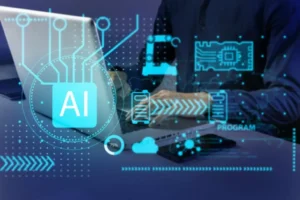Key Roles and Responsibilities in a Software Development Team

New professions enter the job market every year, and the IT development niche is no exception. However, understanding software development team roles may be challenging because they have various areas of responsibility, processes, and approaches.
As a result, if you operate a business and want a competent development team for your project, we recommend reading the material below. Before you ponder what sort of specialist you will require to develop a software product, you should be aware of the top most in-demand professionals, essential roles, and each specialist’s area of tasks.
Let’s dive deeper into various duties of a software development team.
12 Roles in a Software Development Team
We assess the essential criteria and required expertise for each specialization to make it simpler to select the correct professional. We’ve produced a list of the top twelve most well-known experts and key responsibilities in software development teams.
This does not imply that all the expertise listed below must work on every project. On the other hand, a competent in-house development team can boost performance and obtain maximum outcomes.

We are confident that we have what it takes to help you get your platform from the idea throughout design and development phases, all the way to successful deployment in a production environment!
Product owner
The job speaks for itself. In essence, the product owner is wholly absorbed in the project’s work from start to finish.
Having one of the most essential software development team roles, the product owner collaborates with all team members more closely. His primary aim is to get the most value from the output by reducing obvious flaws to customers.
The product owner gathers input, logs every user discontent, prioritizes the workflow and presents the users’ points of view to the development team.
The specialist is unfamiliar with technology concerns, and the development project needs to be put in his hands. He needs to investigate the technical reasons why the product performs above and above the consumers’ expectations. One of the most important jobs is to bring out a customer’s pain and insist that the developers find a solution and erase the problems.
In actuality, the proprietor is preoccupied with reconciling consumer expectations with reality.
Product manager
A product manager is a liaison between the client and the team. It isn’t easy to interact with the client without the assistance of such an expert. He takes a strategic approach and coordinates all aspects of the software development process from start to finish.
A product manager is responsible for a wide variety of tasks:
- Coordination with customers.
- Leading a group of people to a shared objective.
- Managing the time resource.
- Tracking progress and identifying impediments.
- Organizing frequent gatherings.
- Manage documentation and reports.
The product manager is concerned with the market and the intended audience. This is how he selects the order of the subsequent improvements.
Experts must research the market and rivals before devising a plan. The product owner, developers, marketers, and salespeople are actively engaged.
Team leader
The most adaptable and experienced software development team role is the team leader. Such a specialist possesses professional technical knowledge, leadership characteristics, and team management experience.
- Coordination with customers (receiving and formulating requirements);
- Analysis of needs;
- Development and selection of optimal solutions to specific problems;
- Decomposition of solutions, preparation of technical specifications, and implementation plan needed for the software development process;
- Documentation maintenance;
- Prioritization, coordination of priorities by existing projects;
- Implementation of new and improved processes in the department.
The leader boosts development team morale, engages in problem-solving brainstorming sessions, and provides input on growth procedures.
Tech leader
It is a common misconception that team leader and tech leader jobs are interchangeable. A tech leader’s responsibilities extend beyond ordinary activities.
A tech manager is in charge of overseeing hardware and technological needs, assisting, and is also in charge of the following:
- Management of the development team.
- Work with product designers, managers, and software developers to create engaging user-facing products.
- Collaborate with the team to develop new features.
- Create, track, and manage team tasks.
- A software architect or analyst is a common title for such an expert.
As a developer in charge, the tech leader spreads multiple tasks among the team members, supervising the overall project.
Full-stack developer
A full-stack developer is often viewed as a “two-in-one” specialist, and this perception has persisted in the IT industry for a long time. This is due to his ability to mix the technologies and talents of two specialists simultaneously — the back-end and the front-end. As a result, a full-stack developer frequently conducts all of the “dirty labor” in the development team.
He is a capable software architect who works independently on the project’s software development and management. The specialist’s professional level enables them to make choices without needing extra approvals.
Front-end developer
A front-end developer connects the software interface to clients. His primary responsibility is to provide an appealing and user-friendly interface. He is responsible for the visible portion of the website or application that each customer sees.

A developer is a professional who understands how to layout online pages, understands one or more JavaScript frameworks, and conversates with other technologies required to make a website.
Back-end developer
The back-end developer is among key software development team roles focused on everything that happens “behind the scenes” on the website. Unlike the front-end, the back-end specialist’s work is not visible on the site.
A software architect works on server code and controls the resource’s response to user activities and information output. So, if something doesn’t work but the rest of the machinery works well, this is a job of the back-end professional.
Quality-assurance leader
The quality assurance manager collaborates with the QA staff. This individual is in charge of product quality control if the various software tiers are performing as expected.
It is also critical to the quality assurance leader to ensure that the final product is as user-friendly as possible and free of bugs.
The scope of tasks may differ depending on the project. Still, the primary purpose remains to ensure that the final software product complies with industry norms, corporate standards, and customer expectations.
Quality-assurance engineer
An engineer tests software using various automated techniques, and having one on your team speeds up the testing process.
A QA engineer oversees the quality of the project at all phases of development and guarantees that everything is relevant to the old features after testing the new ones. In today’s reality, a QA engineer’s job begins with producing technical documentation: he tests it and examines the requirements for flaws, saving the organization money on repairing them.
Unlike testers, QA engineers design and execute their methodologies and testing tools in addition to using those the organization provides.
Tester
In comparison to a QA engineer, the tester performs all operations manually. The expert assumes the role of “visitor” and imitates behaviors on the website or application. In this manner, he examines the product through a typical user’s eyes, identifying any mistakes and hassles in its use.
The primary duties are test functionality, product business logic, graphical interface, major task accuracy, and user-friendliness.
Working as a tester of websites or mobile applications entails testing items to guarantee that clients receive the easiest, most intelligible, and most productive services that are free of defects.
UI designer
User interface designers are responsible for the overall visual look of the program. They must choose an appropriate style, content, and other such items. A UI designer must collaborate with a UX designer and a front-end developer, in addition to different software development team positions. This teamwork allows them to build the most excellent interface possible.
The work on the visual aspect of a product is referred to as UI design. The designer brings the interface to life by applying the user experience architecture defined by the UX designer.
They operate with the following elements: navigation, buttons, typefaces, icons, animations, and images. Occasionally, professionals must work with voice and sound aspects.
UX designer
A UX designer goes above and beyond to deliver the most outstanding possible user experience. The specialist is responsible for researching customer needs, developing service logic, and testing target audience prototypes.
The UX designer is among roles in software development that is in charge of increasing the intelligibility of current material, evaluating visitors’ use of the program and testing various modes of interaction.
UX and UI designers are critical team members since distinctive features would only be compelling with them.

Find a Remote Development Team You Can Trust
Now that you understand the duties and responsibilities of the software development team, you should have a better understanding of how everything works in this domain. The organization does not engage superfluous specialists; each contributes significantly to the end outcome.
Another crucial concern is how to put together the best team of professionals who can be trusted. Some critical actions can assist you in making the best decision.
Determining the expected result
You must specify the outcomes you hope to achieve by collaborating on your project. Consider not only the product but also the company goals and tactics for achieving them.
You should also consider the type of professionals you want on your team: experts, quick learners, or high performers. Combining all three sorts of expertise is excellent. As a result, an expert may produce a product based on his knowledge, while a rapid learner discovers intriguing and innovative stacks to boost development efficiency.
Negotiations
The fundamental goal of the negotiating stage is to specify what you anticipate from the collaboration. For a reasonable conclusion, you must assess if the applicant understands your project, goals, and criteria.
Identifying control points is a critical component of supporting collaborative work. Here, you should conduct more studies and place a few significant moments.
It would help if you examined applicants’ portfolios to determine their practical experience and the quality of their work. It would be best to guarantee that a team has the necessary competence of your project. Ask questions about the team’s background, communication protocols, and development process.
You can assign a test project to software architects (or other needed candidates) to check how they manage the work. This allows you to assess their abilities and ensure they are up to the task. Allow a trial period with a remote development team to observe how things proceed. This will give you a sense of how well you can work together and whether a team is a good fit for your tasks.
Non-disclosure agreement
Ensure you can protect your concept and efforts before working on a project. Companies enter into non-disclosure agreements (NDAs) to ensure that workers are cautious with the information they get and do not disclose it to third parties. This agreement prohibits the disclosure of information about corporate procedures or intentions.
Non-disclosure agreements are often called confidentiality agreements, non-disclosure contracts, or confidential disclosure agreements. They all imply precisely the same thing. A non-disclosure agreement also includes the following:
- A complete description of the work process.
- The findings of both parties.
- Procedures of dealing with information.
The NDA specifies what information should be kept private and safeguards intellectual property.
Please only give out information you wish to include in the agreement before composing it because it excludes any already revealed information.
You’ll be able to identify remote professionals you can trust to deliver or update your project on schedule and satisfy all your demands and expectations if you follow these suggestions and understand software development team roles.
Top Articles
How To Choose AI Software For Your Business?
I am here to help you!
Explore the possibility to hire a dedicated R&D team that helps your company to scale product development.






